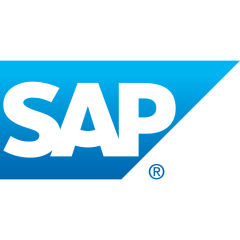SAP ERP integration - infrastructure, data model, and data distribution.

SAP ERP integration - infrastructure, data model, and data distribution.
We have used this for management of SAP master data with enterprise wide workflows for objects material, such as banks, customers, and vendor.
I've used it since 2013.
Not as long as you stay inside the set standards.
Not as long as you stay inside the set standards.
Not as long as you stay inside the set standards.
It is the standard level that we use from SAP. Thorough and slow, but it's very administrative if you follow strictly by the rules. It helps to know a few guys.
We did use and implement different solutions, either a custom made office solution (Notes, Sharepoint, Mail) or a Standalone SAP System. We chose this solution becauseit has -
The setup is straigthforward if you have a clear definition of the target structure and data defintions. If you have various versions of data definitions across the target landscape, the setup and rules defintition (how to transform/interpret data depending on the source-target relationships) becomes very complex. In short, the technology is straightforward, but it does not turn bad data into good data.
Both, implementation success is largely dependant on the maturity of Master Data Management overall. You will need most support on the conceptual definition of the degree and level of harmonization of data across the enterprise. Technical consulting is required depending on you in-house SAP expertise: you need SAP BW Workflow, ABAP coding and Webdynpro skills, plus a solid SAP Basis.
Classical MDM in SAP ERP (Custm Transactions & SAP Business Workflow)
SharePoint based Forms
Lotus notes based Forms
Strong solid base in the SAP ERP, but it needs to improve its maturity in certain elements (data model coverage, performance, usability, and search).
I found the business workflow engine embedded inside SAP Master Data Governance to be the most useful. It helped orchestrate master data CRUD operations across the enterprise cutting across departments.
SAP Master Data Governance helped the organisation prevent bad and unauthorised master data from entering the production database. It helped crystallise the data governance processes.
A wizard based configuration similar to S/4 HANA Activate would make it easier for business users to contribute.
Consolidation function based on HANA needs improvement
More than five years
There have been no issues with the deployment.
There have been no stability issues.
There have been no scalability issues.
I have found them to be very helpful.
It was very easy to set-up. The out of box configuration can be activated in a few weeks itself.
Informatica MDM
This product is suitable for a predominantly SAP landscape.
We're a consulting company in the area of procurement solutions, where product and supplier master data builds the base for any Spend Analytics, Strategy and any Automation Scenarios. Majority of our customers use SAP MDG especially for Supplier Master Data.
Our customers are integrating their central SAP MDG with procurement solutions for self-registration and supplier profiling including supplier qualification, supplier performance and development. The central SAP MDG is also used as master data hub to distribute Central Master Data and Supplier Master Data into the different back end systems like SAP ERPs and Non SAP ERPs and others.
A good solution for large enterprises.
The price can be improved.
It follows the SAP standard rules and governance for master data operations and follows change and release management rules according to SAP standards for IT operations. It offers the full SAP administration and governance, and it's quite a stable and professional product.
SAP Master Data Governance is a scalable product.
Technical support depends on the size and type of company. Multiple support levels are available.
Installation is straightforward. I don't think there's a big difference between this and other products.
I would recommend SAP Master Data Governance to new customers, especially large companies.
On a scale from one to ten, I would give SAP Master Data Governance an eight.

